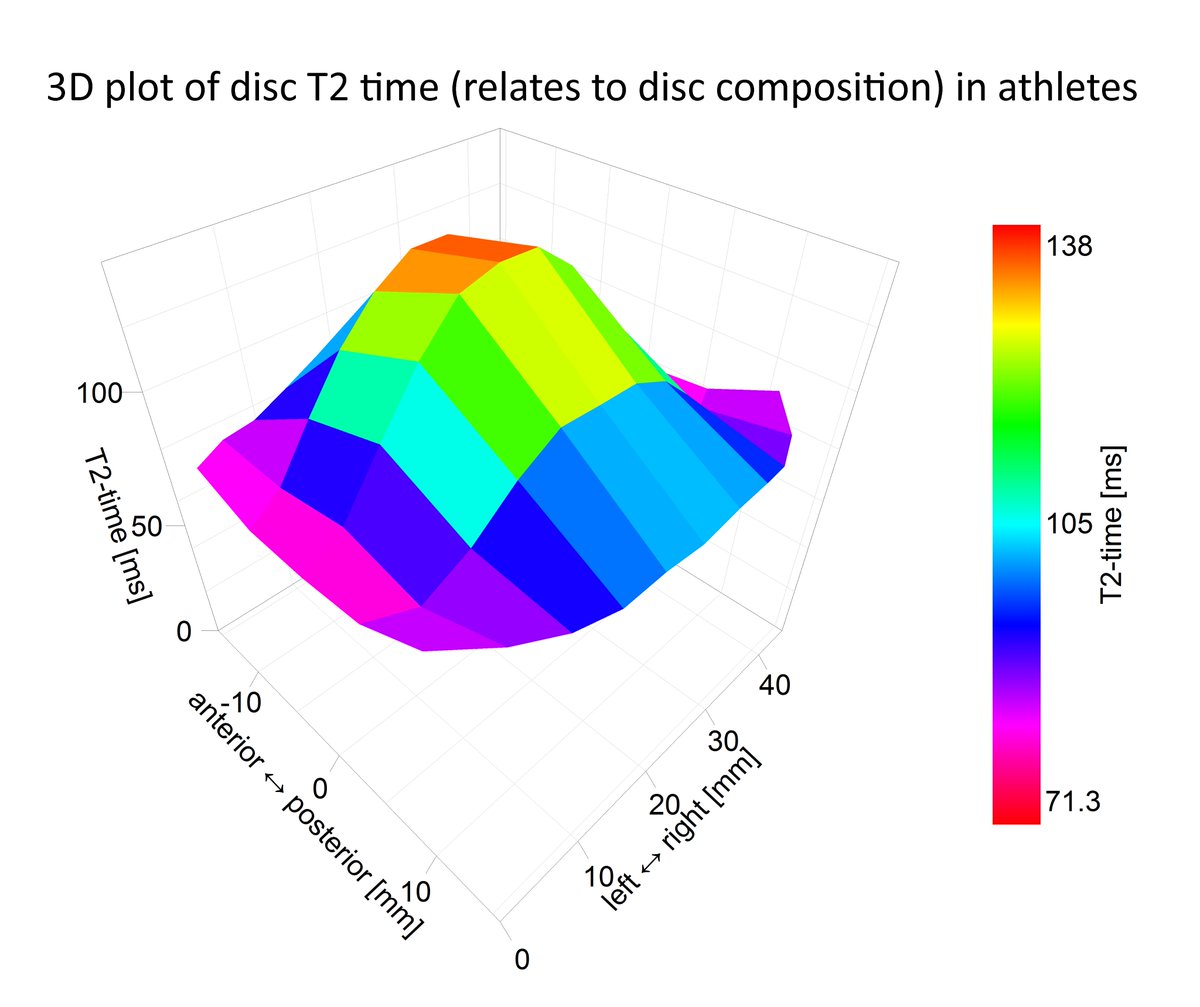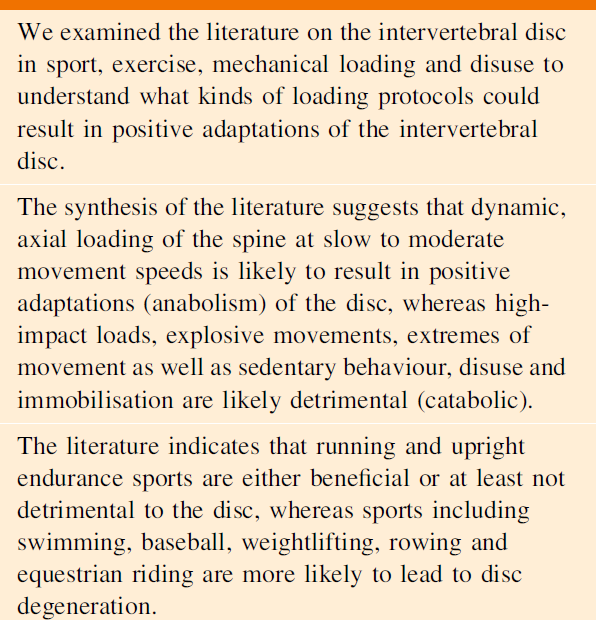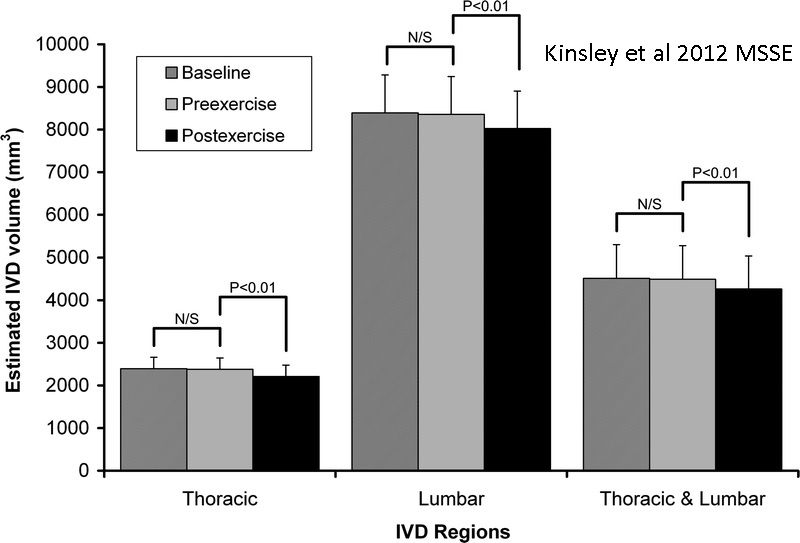
What causes back pain?🤔
Specifically: how much do nervous system, spine tissue and psychosocial contribute to #backpain?
#systematicreview with multivariate #metaanalysis in European J Pain @EFIC_org
doi.org/10.1002/ejp.18…
Led by @ScottTags 🙏collaborators
Thread
👇
Specifically: how much do nervous system, spine tissue and psychosocial contribute to #backpain?
#systematicreview with multivariate #metaanalysis in European J Pain @EFIC_org
doi.org/10.1002/ejp.18…
Led by @ScottTags 🙏collaborators
Thread
👇

Low #backpain is leading cause of disability worldwide… 90-95% of cases are considered 'non-specific'
Many factors can contribute
Image 👇from doi.org/10.2147/jpr.s1… @chadcookpt
But which ones and how much?
Many factors can contribute
Image 👇from doi.org/10.2147/jpr.s1… @chadcookpt
But which ones and how much?

Individual meta-analyses + factors associated with back pain
➡️ pain processing doi.org/10.1097/j.pain…
➡️ disc degeneration doi.org/10.3174/ajnr.A…
➡️ muscle atrophy doi.org/10.2522/ptj.20…
➡️ depression / distress doi.org/10.1093/fampra…
But is one more important than other?
➡️ pain processing doi.org/10.1097/j.pain…
➡️ disc degeneration doi.org/10.3174/ajnr.A…
➡️ muscle atrophy doi.org/10.2522/ptj.20…
➡️ depression / distress doi.org/10.1093/fampra…
But is one more important than other?
Methods:
#systematicreview multivariate #metaanalysis
studies comparing non-specific #backpain to pain-free
studies MUST have at least two of three domains (Table👇)
Newcastle-Ottawa scale for risk of bias
random-effects pairwise and multivariate meta-analyses
#systematicreview multivariate #metaanalysis
studies comparing non-specific #backpain to pain-free
studies MUST have at least two of three domains (Table👇)
Newcastle-Ottawa scale for risk of bias
random-effects pairwise and multivariate meta-analyses
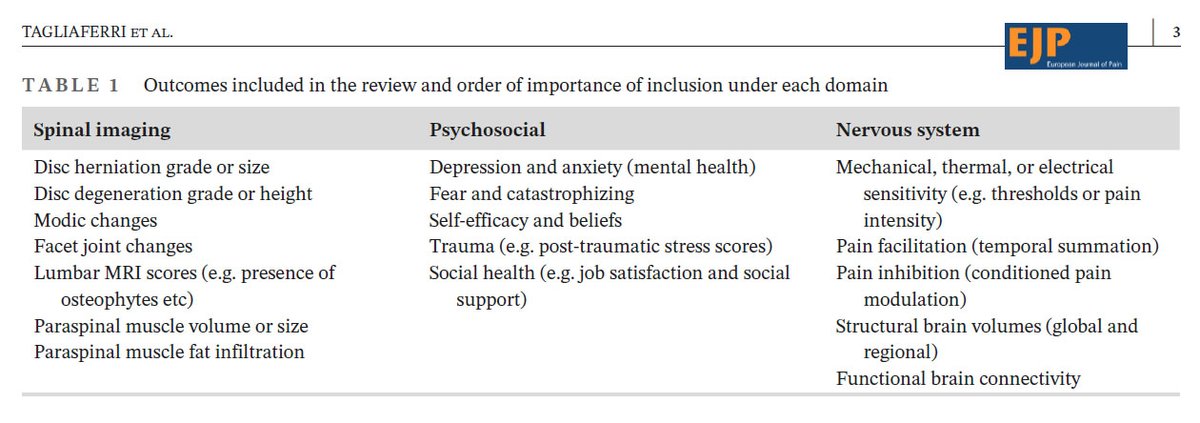
Results
> 4000 studies screened
52 studies included
33 in quantitative synthesis
4 (12%) studies examined spinal imaging
33 (100%) psychosocial factors
30 (91%) nervous system biomarkers
>2000 participants in primary meta-analyses
> 4000 studies screened
52 studies included
33 in quantitative synthesis
4 (12%) studies examined spinal imaging
33 (100%) psychosocial factors
30 (91%) nervous system biomarkers
>2000 participants in primary meta-analyses
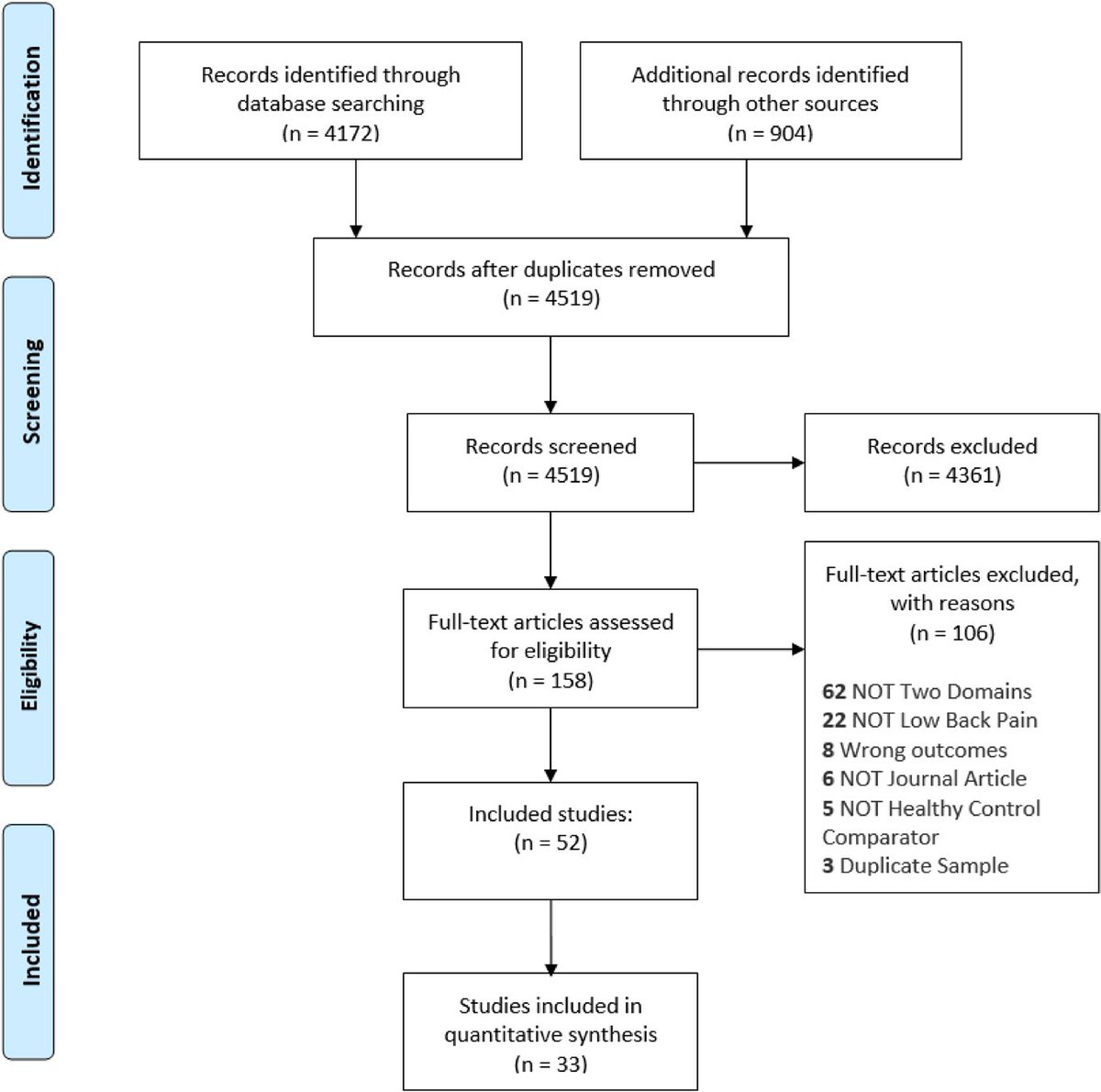
Results:
✅Psychosocial factors had largest effect size
✅Larger than spine tissue or central nervous system biomarkers
✅Psychosocial factors had largest effect size
✅Larger than spine tissue or central nervous system biomarkers
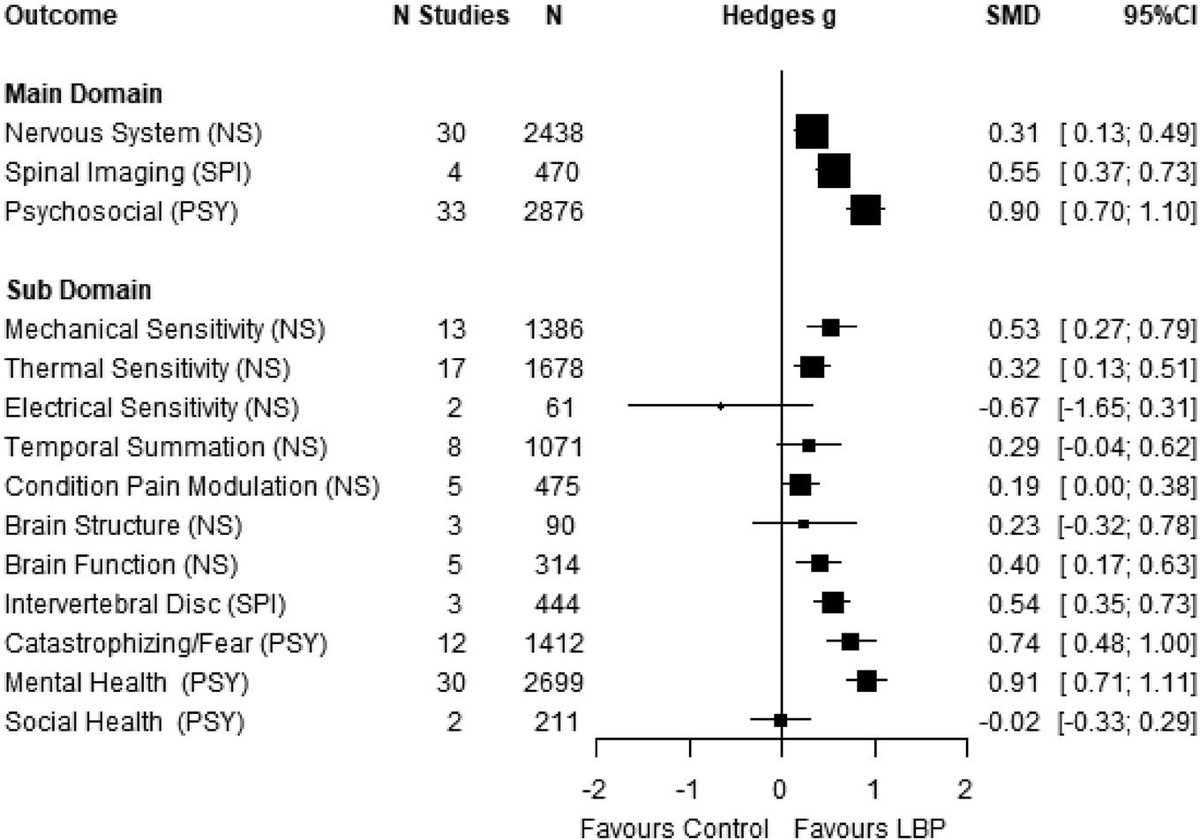
Results:
✅chronic pain: nervous system, psychosocial and spinal imaging were different compared to pain-free control
✅acute pain: only psychosocial state was compromised. Spinal imaging biomarkers could not be assessed due to the lack of studies
✅chronic pain: nervous system, psychosocial and spinal imaging were different compared to pain-free control
✅acute pain: only psychosocial state was compromised. Spinal imaging biomarkers could not be assessed due to the lack of studies

Results:
✅looking at all the different kinds of biomarkers lumped in under (for example) nervous system, lead to similar results
✅looking at all the different kinds of biomarkers lumped in under (for example) nervous system, lead to similar results

What do the findings mean?
Spinal imaging, psychosocial and nervous system biomarkers contribute to non-specific low #backpain
Psychosocial factors "may" contribute more to non-specific back pain (note, we talk only about "effect sizes")
Spinal imaging, psychosocial and nervous system biomarkers contribute to non-specific low #backpain
Psychosocial factors "may" contribute more to non-specific back pain (note, we talk only about "effect sizes")
Paths forward in the future… some key aspects:
➡️ Only one (!) study to date that assessed all three domains. This = big evidence gap
➡️ The ‘non-specific’ label should be reconsidered as research finds specific and treatable multidimensional labels underpinning the condition
➡️ Only one (!) study to date that assessed all three domains. This = big evidence gap
➡️ The ‘non-specific’ label should be reconsidered as research finds specific and treatable multidimensional labels underpinning the condition
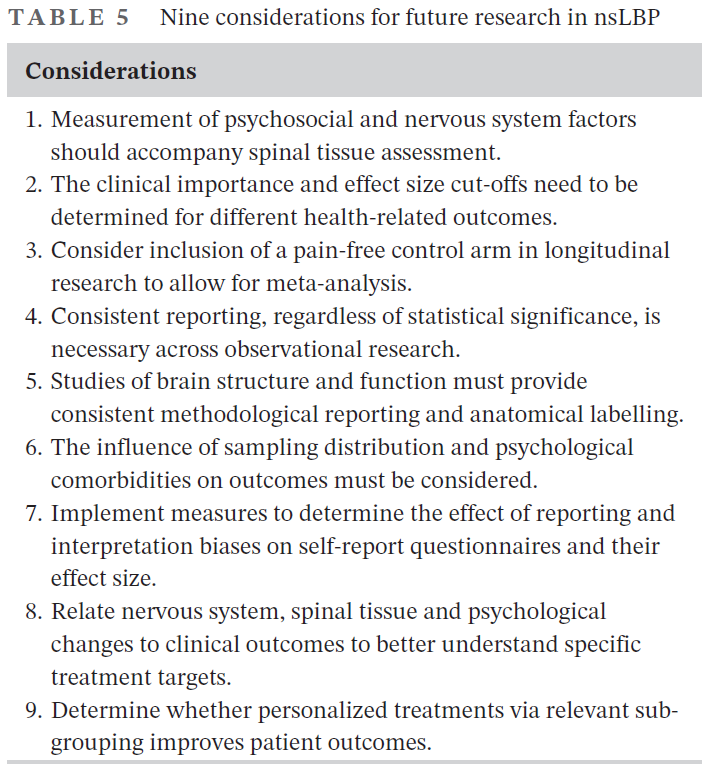
Limitations include:
(a) Only cross-sectional studies available (causality)
(b) Only four studies assessed the role of the spinal imaging along with psychosocial/nervous system biomarkers.. need more studies for this
(c) The lack of consistent reporting of brain regions
(a) Only cross-sectional studies available (causality)
(b) Only four studies assessed the role of the spinal imaging along with psychosocial/nervous system biomarkers.. need more studies for this
(c) The lack of consistent reporting of brain regions
Key next steps:
🚀Larger scale study examining multiple domains
🚀Then, consideration of multidimensional sub-groups and their potential clinical significance
Maybe, one day, we can do away with the label non-specific for back pain 🙂
🚀Larger scale study examining multiple domains
🚀Then, consideration of multidimensional sub-groups and their potential clinical significance
Maybe, one day, we can do away with the label non-specific for back pain 🙂
Interested in the research group @hsgesundheit in musculoskeletal health research in #Germany?
More details here and link to team website
👇👇👇👇👇
More details here and link to team website
👇👇👇👇👇
https://twitter.com/belavyprof/status/1380419859549462528
• • •
Missing some Tweet in this thread? You can try to
force a refresh





